Cones first entered the ice cream world at the turn of the 20th century ― and it’s a damn good thing they did. They’ve been made for over a hundred years now, but do you know how this summer magic is produced?

Some small ice cream shops still make waffle cones the old fashioned way, quickly rolling the waffle cookies into a cone shape when still warm from the iron, but the cones you get at the grocery store or most ice cream stands are mass produced.
It takes many pounds of flour and sugar and some very impressive machinery to make these cones possible. And different cones ― like waffle and cake cones, for example ― require their own unique machinery and ingredients. That’s why the two are so different.
Let’s take a closer look at the production of two of the best things to happen to ice cream: the waffle cone and the cake cone. (The sugar cone, which is the waffle cone’s sturdier cousin, is made in a similar process as the waffle cone so we won’t explore that here.)
Waffle Cones:
First, the batter ― which is made up of dark brown sugar, caramel coloring, flour, vegetable oil and water ― is mixed in massive vats.
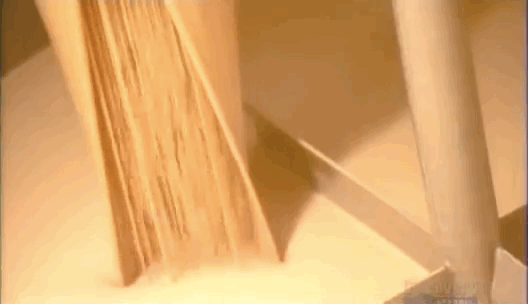
A measured amount is pumped out onto a belt that essentially becomes a moving waffle iron. The belt then runs over a gas heated oven which cooks the batter into a waffle.
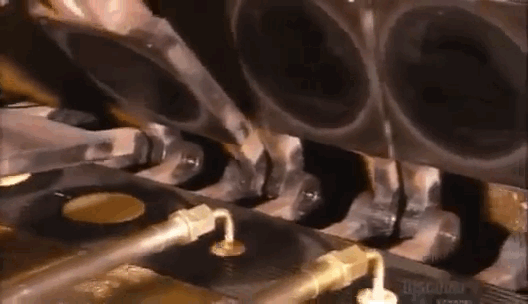
Once cooked to golden brown, the waffles are removed from the belt by mechanical arms.
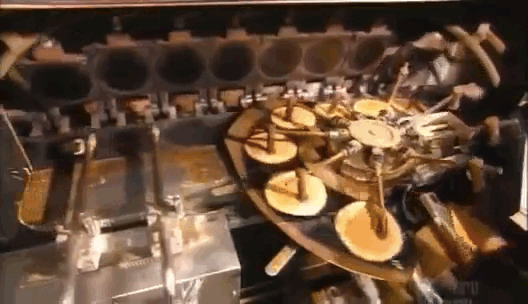
They’re then rolled into cones.
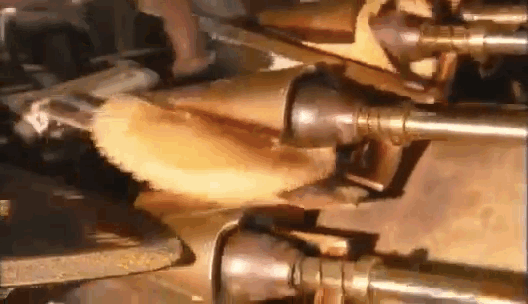
After being rolled, the cones fall down a chute and ride an open elevator up and down to cool and harden. They then make their way down another chute where they’re prepared with paper, ready to be packed into boxes and shipped out.

Cake cones:
The process for making cake cones is similar, but they are made with a different batter ― with much less sugar ― and they use an upright mold.
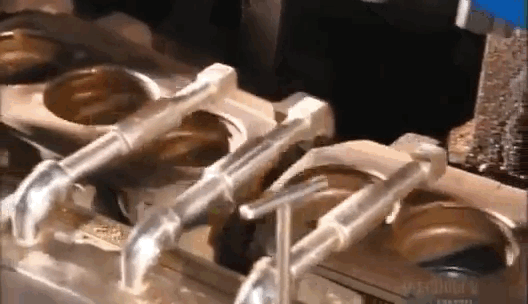
The batter is pumped into a mold and a metal core is plunged into the mold to help the batter take its shape. This also helps make the cones flakier.
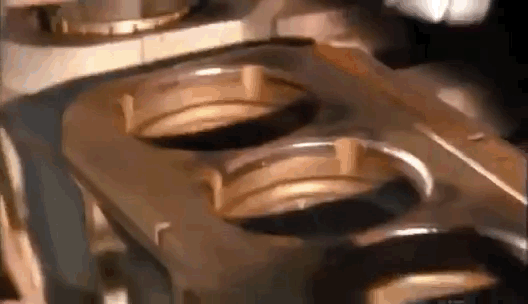
They’re run through gas heaters to bake them.
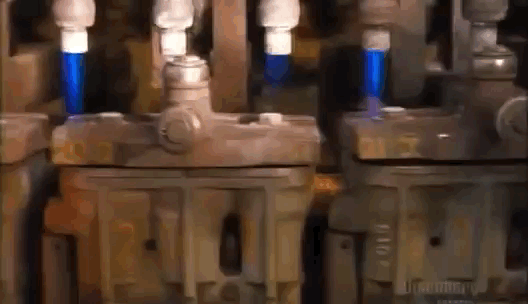
Cake cones don’t need a long cooling down period; they come out already flaky and crisp ― a texture similar to styrofoam, some would say.
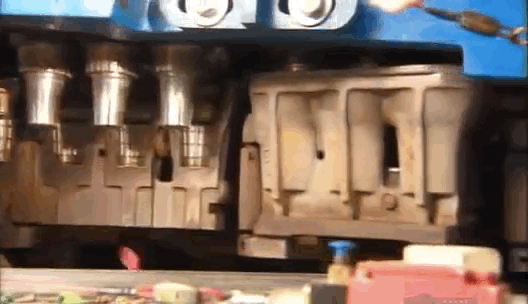
Once pressed out of their mold, they pass through a chute ready to be packaged.
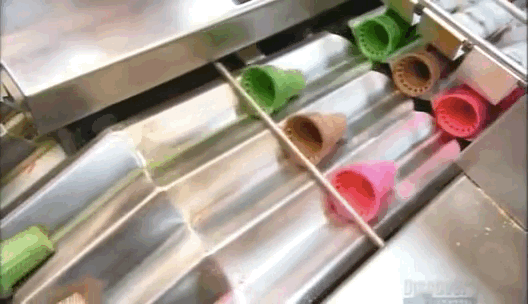
For more on how to make waffle and cake cones, watch the full video below: